Gambler's ruin in Astro and the accuracy of Gaussian approximation [3]

In the previous posts, we calculated the distribution of the so-called “flight time” $\tau_{\alpha}$, interpreted as the (random) number of Astro card a player can scratch before loosing more than their initial investment $\alpha$ (typically $\alpha$ is €2), both in closed-form under a continuous time Gaussian setting and empirically using random simulations of the exact Astro loss random walk. These two approaches showed that $\frac{\alpha}{\mu}$, where $\mu$ is the average loss of random walk step, was a good estimation of $\mathbb{E}\left[ \tau_{\alpha}\right]$; in the case of Astro, this estimate is $\mathbb{E}\left[ \tau_{\alpha}\right]\approx 3.17$. We now show that this estimation is actually correct. We will actually prove a more general result, namely a closed-form expression of the Laplace transform of $\tau_{\alpha}$, based on the method of martingales already used in the Gaussian approximation.
We recall that $\left(\xi_t\right)_{t\in\mathbb{N}}$ denotes a i.i.d sequence of random Astro losses and let $$ X_t = \sum_{s=1}^t \xi_s $$ be the cumulative loss after $t\in\mathbb{N}$ steps, and that the flight time is defined by the equation $$ \tau_{\alpha} = \inf\left\lbrace t\in\mathbb{N}, X_t \geq \alpha\right\rbrace. $$
What goes wrong in the method of martingales for discrete random walks?
In the continuous time Gaussian setting, we replaced $\tau_{\alpha}$ and $\left(X_t\right)_{t\in\mathbb{N}}$ with $\bar{\tau}_{\alpha} = \left\lbrace t\in\mathbb{R}_+, Z_t \geq \alpha\right\rbrace$ and $\left(Z_t\right)_{t\in\mathbb{R}_+}$ satisfying the stochastic differential equation $dZ_t = \mu dt + \sigma dW_t$, driven by a Brownian motion $W$. Then for any $\lambda\in\mathbb{R}$, $$ M^\lambda_t = \exp\left( \frac{\lambda}{\sigma} Z_t - (\frac{\lambda^2}{2} + \frac{\lambda \mu}{\sigma})t\right) $$ defines a martingale and a standard application of Doob’s optional stopping theorem showed that $\mathbb{E}\left[M^\lambda_{\bar{\tau}_{\alpha}}\right]=1$. Now in general, this gives information on two random variables simultaneously: $\bar{\tau}_{\alpha}$ and $Z_{\bar{\tau}_{\alpha}}$. The whole trick is to disentangle the contribution of each of these variables and extract the Laplace transform of $\bar{\tau}_{\alpha}$, which is $\mathbb{E}\left[e^{-\beta \bar{\tau}_{\alpha}}\right]$ for $\beta>0$. In the continuous time setting, the almost sure continuity of $t\mapsto Z_t$ and the definition of $\bar{\tau}_{\alpha}$ shows that $Z_{\bar{\tau}_{\alpha}}=\alpha$ (almost surely), which is not random at all, thus revealing information directly on $\bar{\tau}_{\alpha}$.
By contrast, the discrete time counterpart $X_{\tau_\alpha}$ does not satisfy a similar equality in general, but only the inequality $X_{\tau_\alpha} \geq \alpha$. Worse, the distribution of $X_{\tau_\alpha}$ can be quite difficult to characterise as there are potentially many different sequences of steps $\xi_1, \dots, \xi_{\tau_\alpha}$ that result in crossing the barrier $\alpha$. In a special case of step distribution however, $X_{\tau_\alpha}$ takes a simple form, namely if the process $X$ can only increase by a fixed step size, or decrease by multiples of the same step size. More precisely, let $\Delta>0$, $(p_k)_{k\in\mathbb{N}}$ such that $p_k\in[0, 1]$ for all $k\in\mathbb{N}$ and $\sum_{k\in\mathbb{N}} p_k < 1$, and define the i.i.d. step sequence $(\xi)_{t\in\mathbb{N}}$ by
$$
\xi_t = \begin{cases}
-k\Delta& \text{with probability $p_k$}\,,\\
\Delta& \text{with probability $1-\sum_{k\in\mathbb{N}} p_k$}\,.\\
\end{cases}
$$
Indeed, this forces the process $X$ to move over the grid $\Delta \mathbb{Z}$, and since $\alpha>0$ and $X$ can only increase by $\Delta$, this implies that $X_{\tau_{\alpha}}$ can only take a single value corresponding to $X_{\tau_{\alpha}-1}<\alpha$ and $\xi_{\tau_{\alpha}}=\Delta$, i.e. $X_{\tau_{\alpha}}=\lceil \frac{\alpha}{\Delta}\rceil\Delta =: \alpha^+$, where $\lceil x \rceil$ denotes the ceil operator (smallest integer larger than $x$).
As it turns out, this rather specific property is satisfied by the Astro step distribution: $\xi_t$ is equal to €2 minus the gain of the $t$-th ticket, and since all gains are multiple of €2, with a minimum of 0€, the above property holds with $\Delta$ equal to €2 and $(p_k)_{k\in\mathbb{N}}$ the corresponding gain probabilities.
Exponential supermartingale and expected flight time
Using the property that $X_{\tau_\alpha}$, the martingale method developed in the first part for the Gaussian approximation can be applied to the process $X$ essentially unchanged. Let $\xi$ denote a generic random variable following the Astro step distribution and define $$ \psi\colon \lambda\in\mathbb{R}^*_+ \mapsto \log\mathbb{E}\left[ e^{\lambda \xi}\right]\,. $$ Then, for any $\lambda>0$, the process defined for $t\in\mathbb{N}$ by $M^\lambda_t = e^{X_t - t\psi(\lambda)}$ is a martingale. Using the expression of the step size sequence, we have $$ \psi(\lambda) = \lambda \Delta + \log\left(1 - \sum_{k\in\mathbb{N}}p_k\left(1 - e^{-\lambda (k+1)\Delta}\right)\right)\,. $$ Moreover, $e^{\psi(\lambda)} = \mathbb{E}\left[e^{\lambda \xi}\right] \geq e^{\lambda \mu}$ by convexity and Jensen’s inequality, where $$ \mu=\mathbb{E}\left[\xi\right] = \Delta \left( 1 - \sum_{k\in\mathbb{N}} (1+k)p_k\right)\,. $$ and hence $\psi(\lambda) \geq \lambda \mu >0$.
The same arguments as for the Gaussian approximation (dominated convergence, Doob’s optional stopping theorem) apply and show that $\mathbb{E}\left[ e^{-\psi(\lambda) \tau_{\alpha}}\right] = e^{-\lambda \alpha^+}$. Noting that $\psi$ is invertible and using the change of variable $\beta = \psi(\lambda)$, we deduce that $$ \mathbb{E}\left[ e^{-\beta \tau_{\alpha}}\right] = e^{-\psi^{-1}(\beta) \alpha^+}\,, $$ which is the expression of the Laplace transform of $\tau_{\alpha}$. To obtain the expected flight time $\mathbb{E}\left[ \tau_{\alpha}\right]$, we differentiate with respect to $\beta$, which gives $$ -\frac{\partial}{\partial \beta} \mathbb{E}\left[e^{-\beta \tau_{\alpha}}\right] = \mathbb{E}\left[ \tau_{\alpha}\right] = (\psi^{-1})'(0)\alpha^+ e^{-\psi^{-1}(0)\alpha^+} = (\psi^{-1})'(0)\alpha^+\,, $$ since $\psi(0)=0$.
The term $(\psi^{-1})'(0)$ can be calculated using the inverse function rule, which yields $(\psi^{-1})'(0)=\frac{1}{\psi'(0)}$. A direct calculation shows that $$ \psi'(\lambda) = \Delta + \frac{-\Delta\sum_{k\in\mathbb{N}}(k+1)p_k e^{-\lambda (k+1) \Delta}}{1 - \sum_{k\in\mathbb{N}}p_k\left( 1 - e^{-\lambda (k+1) \Delta}\right)}\,, $$ and thus $\psi'(0) = \Delta\left(1 - \sum_{k\in\mathbb{N}}(k+1)p_k\right) = \mu$. Going back to the expected flight time, we have $$ \mathbb{E}\left[ \tau_{\alpha} \right] = \frac{\alpha^+}{\mu}\,. $$ In particular for the Astro distribution, $\alpha=\Delta=\alpha^+$; in other words, $\mathbb{E}[\tau_{\alpha}]=\mathbb{E}\left[\bar{\tau}_{\alpha}\right]$, i.e. the Gaussian approximation was actually correct in expectation!
Going further: higher moments
Thanks to the exact calculation of the Laplace transform of $\tau_{\alpha}$, it is possible to derive higher moments by differentiating $\mathbb{E}\left[e^{-\beta \tau_{\alpha}}\right]$ multiple times. A key observation is that the function $\psi$ fully describes the cumulants $(\kappa_n)_{n\geq 1}$ of the distribution of $\xi$, which are an alternative to moments (intuitively, the $n$-th cumulant is the component of the $n$-th moment that is “independent” of the previous moments; for instance, $\kappa_2$ is the variance of $\xi$ rather than $\mathbb{E}[\xi^2]$). More formally, the cumulants are defined by the power series expansion $$ \psi(\lambda) = \sum_{n=1}^{+\infty} \kappa_n \frac{\lambda^n}{n!}\,, $$ in particular $\psi^{(n)}(0)=\kappa_n$. Therefore, by successive differentiations of $\beta\mapsto e^{-\psi^{-1}(\beta)\alpha^+}$ or $\beta\mapsto -\psi^{-1}(\beta)\alpha^+$, we can obtain the successive moments or cumulants of $\tau_{\alpha}$.
For instance, applying twice the inverse function rule yields $$ \left(\psi^{-1}\right)''\left(\beta\right) = -\frac{\psi''(\lambda)}{\psi'(\lambda)^3}\,, $$ and thus the variance of $\tau_{\alpha}$ is $$ \mathbb{V}\left[\tau_{\alpha}\right] = \frac{\alpha^+ \sigma^2}{\mu^3} \approx 58.46\,, $$ where $\sigma\approx 20.67$ is the standard deviation of $\xi$. As it turns out, this is also exactly the formula provided by the inverse Gaussian distribution $IG\left(\frac{\alpha}{\mu}, \frac{\alpha^2}{\sigma^2}\right)$, i.e. $\mathbb{V}\left[\tau_{\alpha}\right] = \mathbb{V}\left[\bar{\tau}_{\alpha}\right]$!
A natural question is whether higher moments/cumulants are also well approximated by the inverse Gaussian distribution. Intuitively, this should not be the case since the Gaussian distribution used in this approximation only matches the first two moments of $\xi$, which is also suggested by the empirical analysis performed in the second post. We confirm this by an explicit calculation of the third cumulant of $\tau_{\alpha}$.
Indeed, on the one hand, the third cumulant of the inverse Gaussian distribution is given by $$ \bar{\kappa}_3 = \mathbb{E}\left[\left(\bar{\tau}_{\alpha}-\frac{\alpha}{\mu}\right)^3\right] = \frac{3\sigma^4\alpha}{\mu^5}\,. $$ On the other hand, yet another application of the inverse function rule shows that $$ \left(\psi^{-1}\right)^{(3)}\left(\beta\right) = \frac{3\psi'(\lambda)^2\psi''(\lambda)^2 - \psi'(\lambda)^3\psi^{(3)}(\lambda)}{\psi'(\lambda)^7}\,, $$ and thus $$ \kappa_3 = \frac{3\sigma^4\alpha^+}{\mu^5} - \frac{\psi^{(3)}(0)\alpha^+}{\mu^4} = \bar{\kappa}_3 - \frac{\psi^{(3)}(0)\alpha^+}{\mu^4}\,, $$ where $\psi^{(3)}(0)=\mathbb{E}\left[\left(\xi-\mu\right)^3\right]$ is the third cumulant of $\xi$. In other words, negative skewness in the true Astro distribution translates into higher skewness in the flight time distribution than the inverse Gaussian approximation suggests.
Conclusion
We can summarize the Gaussian approximation using the diagram below. Moving from the true Astro step variable $\xi$ to its continuous time Gaussian approximation $dZ$ preserves both mean and variance (as these are the two degrees of freedom of a Gaussian distribution), and this moment matching property is transferred at the level of flight times. However, this commutative diagram does not hold for higher order moments.

License
Copyright 2022-present Patrick Saux.